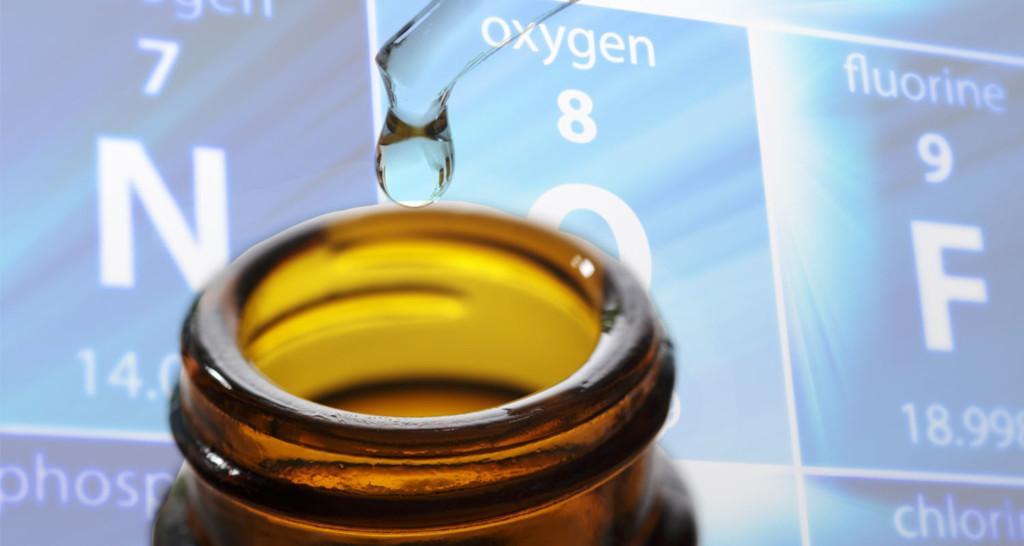
[tldr]
- Ozone is the molecule that you can smell in the air after a thunderstorm. It’s a form of oxygen that’s different from what you’re breathing right now.
- Ozone improves brain function, helps your mitochondria make more energy, kills damaging gut bacteria and toxic mold, speeds up wound healing, decreases inflammation, and makes your teeth and gums stronger.
- This article goes over a few different ways to use ozone therapy, both with a doctor and at home. Just be absolutely sure you do ozone therapy safely; while it’s great anywhere outside your lungs, ozone can be lethal if you inhale it.
[/tldr]
You know that fresh, clean smell in the air after it rains? That’s ozone, a powerful molecule that gets pulled from the atmosphere by electricity during a thunderstorm.
Ozone is oxygen, but it’s different to the oxygen molecules you breathe. Its unique structure makes it a potent signaling molecule in your body, and a valuable biohacking tool.
I wrote a lot about using ozone in Head Strong. It’s one of the best ways to upgrade your mitochondria — the power generators in your cells — so they produce more energy, especially in your brain. I used ozone therapy years ago to get rid of damage from toxic mold. I still use it today to make my mitochondria stronger.
Here’s how ozone therapy works, what it’s good for, and how you can use it safely to upgrade your body.
Disclaimer: While ozone therapy can be a powerful tool for improving your health, it’s also potentially fatal if you do it incorrectly and inhale ozone. If you’re going to do ozone therapy at home, do your research so you’re absolutely certain you know what you’re doing, or consult a doctor.
What is ozone therapy?

Ozone therapy floods your body with small amounts of ozone in a controlled way.
In a recent Bulletproof Radio podcast episode [iTunes] I talked to Dr. Frank Shallenberger, one of the leading ozone therapy experts in the world (he’s been doing ozone therapy for 40 years!). Shallenberger describes ozone in this way:
“Ozone is molecular O3, versus the regular form of oxygen we’re breathing right now, which is molecular O2, meaning that while regular oxygen contains two oxygen atoms, ozone contains three.”
In other words, ozone is a different form of oxygen. When ozone enters your body, the extra oxygen atom reacts with your cell membranes in your body almost immediately and forms lipoperoxides, a type of free radical.
Free radicals aren’t always the bad guy
Normally, you hear about how damaging free radicals are, and how you want to get plenty of antioxidants to prevent them from aging your cells. But in certain cases, free radicals can actually be good for you.
“We’re led to believe that free radicals are bad,” says Shallenberger. “Nothing in our body that our body makes is ‘bad’ bad. Oxidants and free radicals in the correct dose, in the correct amount, are actually highly beneficial.”
A good example is exercise. Working out creates free radicals in your muscles, and the inflammation they cause makes you build stronger, more efficient muscle with more mitochondria.
Ozone therapy is similar. It introduces lipoperoxides that improve your biology in a bunch of different ways.
Ozone therapy benefits

Ozone therapy affects a lot of different systems in your body, depending on how you get the ozone (more on that later). Here are some of the benefits of ozone therapy:
- Energy production. Low doses of ozone lipoperoxides gently stress your mitochondria, making them stronger and more efficient at producing energy.[ref url=”https://www.ncbi.nlm.nih.gov/pmc/articles/PMC4503975/”]
- Brain function. Lipoperoxides can cross the blood-brain barrier and reach your brain, which has a huge concentration of mitochondria.[ref url=”https://books.google.com/books?id=clTevkIgTVUC”] That could explain why ozone therapy helps people recover brain function after a stroke.[ref url=”https://www.ncbi.nlm.nih.gov/pmc/articles/PMC4146136/”] Ozone therapy also increases blood flow to your brain, which will further boost your mitochondria.[ref url=”https://www.ncbi.nlm.nih.gov/pmc/articles/PMC538510/”] I felt a dramatic and almost immediate improvement in my brain function after doing ozone therapy.
- Decreased inflammation. It seems strange that flooding your body with free radicals decreases inflammation, but it’s true. The key is getting the right dose. Low levels of ozone stress your cells just enough to make them stronger; they produce glutathione and superoxide dismutase, two of the strongest antioxidants in the human body.[ref url=”https://www.ncbi.nlm.nih.gov/pmc/articles/PMC3298518/”][ref url=”https://www.ncbi.nlm.nih.gov/pmc/articles/PMC4503975/”] Low-level ozone also activates heat shock proteins, the same anti-inflammatory proteins that turn on when you use a sauna.
- Faster wound healing. Ozone speeds up wound healing, and is especially useful for chronic or treatment-resistant wounds.[ref url=”https://www.ncbi.nlm.nih.gov/pubmed/29536625″]
- Anti-mold, antibacterial, antimicrobial, and antiparasitic effects. Ozone treatment started out as a way to sterilize drinking water.[ref url=”https://www.ncbi.nlm.nih.gov/pubmed/970023/”] Researchers quickly realized that it also treats bacterial infections, even when bacteria are resistant to antibiotics,[ref url=”https://www.ncbi.nlm.nih.gov/pmc/articles/PMC5783482/”][ref url=”https://www.ncbi.nlm.nih.gov/pubmed/10795372/”] and kills parasites.[ref url=”https://www.ncbi.nlm.nih.gov/pmc/articles/PMC4620192/”] Ozone completely removes toxic mold and mycotoxins as well,[ref url=”https://www.ncbi.nlm.nih.gov/pubmed/22286589/”] which is why I originally got into ozone therapy. At the time, it was the only thing I’d found that helped me recover from toxic black mold exposure.
- Strong teeth and gums. The combination of antibacterial and anti-inflammatory benefits makes ozone a powerful way to upgrade your teeth and gums.[ref url=”https://www.ncbi.nlm.nih.gov/pmc/articles/PMC3722714/”] A lot of forward-thinking dentists offer ozone therapy. In fact, it was a dentist who introduced me to ozone therapy and taught me how to do it.
What type of ozone therapy is best?

There are a lot of ways to use ozone, but you have to know what you’re doing before you try them. Above all else, you do not want to breathe in ozone. If you do and it reaches your lungs, it can be fatal. If you’re going to do ozone therapy on yourself, make sure you do your research. Shallenberger wrote a step-by-step guide to ozone therapy, specifically for people interested in doing it at home. That’s a great place to start. Or you can just see a doctor.
There are a lot of different ways to get ozone into your body. Which one is best depends on your goals.
- Ten- pass ozone is the strongest and most effective ozone treatment for most things. It’s also one of the most invasive. A physician pulls some blood out of your body, infuses it with ozone, and then recirculates it, ten times in a row. I had ten- pass ozone done recently to make my brain mitochondria stronger and felt a profound improvement afterward.
- Ozonated water/oil is the easiest form of ozone therapy. You put ozone in water or oil and swallow it, delivering ozone to your stomach. This option is good for clearing out pathogenic gut bacteria or parasites. You can also swish ozonated water or oil around your gums for better oral hygiene, or put it on skin wounds and infections.
- Ozone injections are another option. You can do them at home if you’re trained with needles, or you can get a doctor to do them for you. You can inject ozone pretty much anywhere and it will act locally near the injection site. Ozone injections are good for getting ozone to specific organs and, tumors., etc.
- Rectal ozonation is exactly what you think it is: you insert a catheter and send about a liter of ozone gas into your colon. This is the option I chose to do to myself for my first ozone treatment. The ozone goes straight to the liver, which makes it good for enhancing detox and liver function, and it will reach parasites and pathogenic bacteria in your gut. You can also have a doctor do this one.
Whichever option you choose, be careful not to inhale ozone. If the room starts to smell like it just rained, turn off your equipment and leave the area. Always biohack responsibly.










